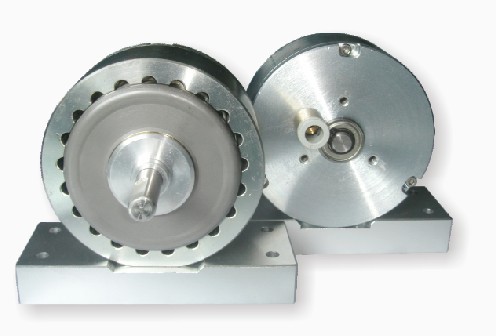In an era where every click, swipe, and scroll defines our digital lives, the tools we use to interact with the web are evolving faster than ever. Enter advanced web guide devices—cutting-edge innovations designed to streamline navigation, boost productivity, and transform how we engage with online content. Whether you’re a tech enthusiast, a busy professional, or someone who simply hates getting lost in cluttered menus, these devices promise to redefine your digital journey.
But what exactly makes them so groundbreaking? Let’s dive in.
------
THE PROBLEM WITH TRADITIONAL NAVIGATION
We’ve all been there: endless tabs, confusing site maps, and the dreaded “404 error” that leaves you wondering if the internet itself is conspiring against you. Traditional navigation methods—think basic hyperlinks, static menus, and manual searches—often feel like using a paper map in the age of GPS. They’re functional but painfully outdated.
Advanced web guide devices address these frustrations head-on. By integrating AI-driven pathfinding, gesture-based controls, and adaptive interfaces, they turn chaotic browsing into a seamless, intuitive experience. Imagine a tool that anticipates your next move, highlights shortcuts you didn’t know existed, and even learns from your habits to personalize your workflow. Sounds like sci-fi? It’s already here.
------
CORE FEATURES THAT SET THEM APART
1. SMART PREDICTIVE SEARCH
Forget typing entire queries into a search bar. These devices analyze your browsing history, current activity, and even peripheral data (like time of day or location) to predict what you need before you ask. A fitness blogger researching protein supplements might instantly see curated results from trusted sources, while a student studying climate change gets prioritized academic journals and real-time data feeds.
2. HOLISTIC GESTURE INTEGRATION
Why click when you can gesture? Advanced models support hand motions, eye tracking, and voice commands. Picture zooming in on a map with a pinch of your fingers or scrolling through a recipe hands-free while cooking. It’s not just convenient—it’s a game-changer for accessibility, empowering users with physical limitations to navigate the web effortlessly.
3. DYNAMIC CONTENT MAPPING
Traditional sitemaps are static and rigid. Next-gen devices generate interactive, 3D visualizations of websites, letting you “walk through” content layers. An online shopper could explore a virtual store aisle, while a project manager might visualize task dependencies in a collaborative workspace. This spatial approach reduces cognitive load and makes complex information digestible.
4. CROSS-PLATFORM SYNCHRONIZATION
These devices sync seamlessly across your phone, laptop, smartwatch, and even AR glasses. Start reading an article on your morning commute, pick up where you left off on your office desktop, and finish it later on your tablet—all without losing your place. The system auto-adjusts layouts for each screen, ensuring optimal readability.
------
REAL-WORLD APPLICATIONS: WHO’S BENEFITING?
FITNESS INDUSTRY: BREAKING SWEAT, NOT FOCUS
Take FitFlow, a boutique fitness app that integrated advanced web guides into their platform. Users now navigate workout libraries using voice commands during exercise, bookmark routines with a blink, and receive real-time form corrections via AR overlays. Result? A 40% increase in user retention and a 25% drop in support queries about navigation issues.
EDUCATION: MAKING LEARNING INTRINSIC
A university in Stockholm piloted web guide devices for online courses. Students explore course materials through interactive mind maps, flag confusing sections with a hand wave, and participate in VR study groups. Early feedback shows a 30% improvement in engagement and a noticeable reduction in dropout rates.
E-COMMERCE: FROM BROWSING TO BUYING IN SECONDS

LuxeThreads, a luxury fashion retailer, revamped their site with gesture-friendly navigation. Shoppers now “swipe” through virtual racks, mix-and-match outfits in 360-degree previews, and checkout with a voice command. servo press ? Average session time dropped by 15% (less wandering), but conversion rates jumped by 22%.
------
FUTURE TRENDS: WHERE DO WE GO FROM HERE?
The next wave of web guide tech is already brewing. Think emotion-sensing interfaces that adjust content tone based on your mood (calming colors for stress, upbeat layouts for motivation) or haptic feedback that lets you “feel” textures in product images. Privacy will also take center stage, with decentralized AI models that process data locally instead of relying on cloud servers.
But perhaps the most exciting frontier is collaboration. Future devices could enable real-time co-navigation, where teams manipulate shared interfaces simultaneously—ideal for remote design sprints or family vacation planning.
------
FINAL THOUGHTS: IS IT WORTH THE HYPE?
Skeptics argue that advanced web guides are just fancier shortcuts. But consider this: the average person spends 6.8 hours daily online. If a tool reclaims even 10% of that time by eliminating friction, it translates to 25 extra days per year. That’s time for creativity, connection, or simply breathing in a hyperconnected world.
So, are these devices a luxury? Maybe. But in a landscape where attention is the ultimate currency, investing in smarter navigation isn’t just practical—it’s essential.
Ready to upgrade your digital compass? The future of browsing isn’t just knocking—it’s redesigning the door.
